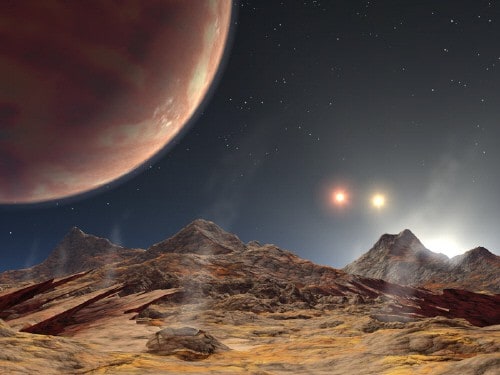A new planet has been discovered orbiting around a star in a triple-star system in the constellation Cygnus. The planet is a so-called hot Jupiter but it is much closer to its parent star than predicted by current theories of planetary formation (Nature 436 230).

More than a hundred extra-solar planets have been found in recent years but most have been discovered in single-star systems. However, more than 60% of the stars in our galaxy are found in binary and multiple star systems. Maciej Konacki of the California Institute of Technology used the 10-metre Keck I telescope in Hawaii to make this latest discovery.
The new planet orbits the main star of a triple-star system called HD 188753 every 3.35 days. Two of the stars form a binary system that orbits around the third primary star at an average distance of 12.3 astronomical units, where one astronomical unit (AU) is the average distance between the Sun and the Earth. The new planet has a mass similar to the mass of Jupiter but orbits the primary star at a distance of just 0.05 AU, which explains why it is much hotter than its namesake in the Solar System. A viewer on the planet would see three “suns” in the sky: one would be yellow because it is very similar to our own Sun, one would be orange and the other would be red.
However, astronomers are puzzled by the fact that the planet is so close to the parent star. According to orbital migration theory, which is currently the leading model of planetary formation, the gravitational pull of the other two stars should have stripped away the protoplanetary disk from the parent star. This disk contains the gas and condensed matter from which planets are thought to form.
“How that planet formed in such a complicated setting is very puzzling,” says Konacki. “Planets from complicated stellar systems will put our theories of planet formation to a strict test.”



